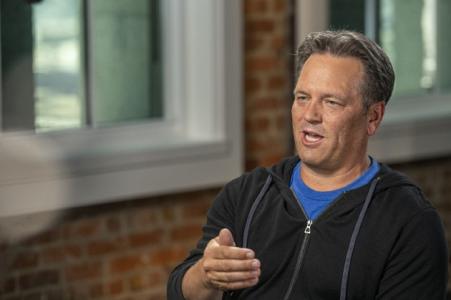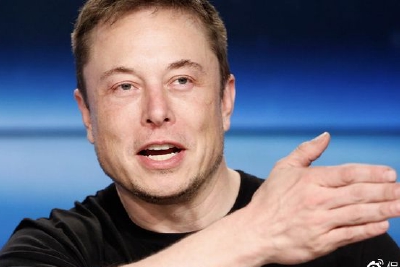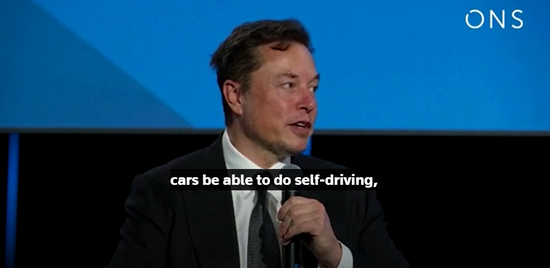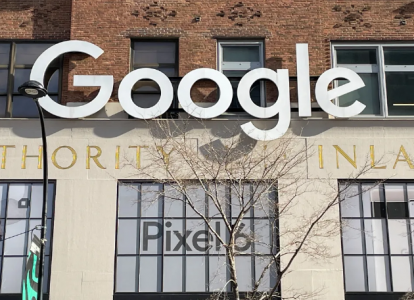your current location is:Home > Finance > depthHomedepth
Musk and Twitter "break up", what is the price of "not love"?
Elon Musk, who said he would spend $44 billion to buy Twitter (NYSE: TWTR), has officially backtracked.
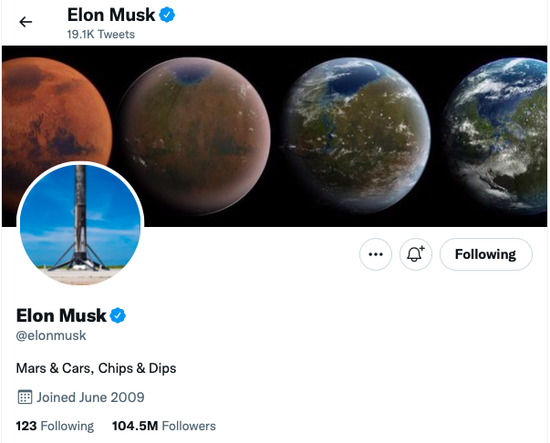
According to an Aug. 30 filing by Twitter with the U.S. Securities and Exchange Commission (SEC), Musk’s advisers sent a letter to Twitter formally notifying the termination of a previously agreed acquisition agreement.
Since April this year, Musk and Twitter have been tossing about whether to buy or not. Initially, Twitter considered using a poison pill plan to stop the acquisition; on April 26, the two parties reached an acquisition agreement, and Musk acquired Twitter for $54.20 per share in cash, with a total transaction value of about $44 billion; but on July 9, Musk Unilaterally repented, believing that Twitter had seriously violated many terms of the agreement, including the issue of false accounts; then Twitter took Musk to court and asked Musk to continue to implement the previous acquisition agreement.
During this period, discussions have never stopped about why Musk bought Twitter, the impact of the acquisition's success/failure on both parties, and more broadly.
At present, from the perspective of stock price alone, the figures of both parties are not good enough. As of the close of trading on August 30, Twitter’s stock price was $39.32 per share, which has dropped 23.9% from the high of $51.7 per share after Musk announced the acquisition of Twitter; Sla (NASDAQ: TSLA) stock price is $277.7 per share, which has also fallen by 20% since April.
love and hate for four months
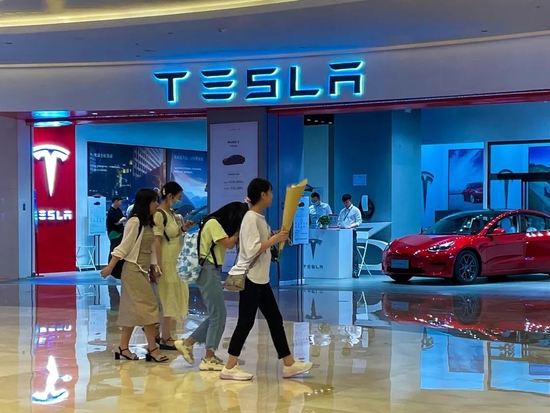 ▲ Picture source IC
▲ Picture source ICOn April 25th, Eastern Time, Twitter submitted a report to the SEC, announcing that it had reached a final agreement with Musk, who would acquire Twitter at a price of $54.2 per share (a premium of 38%) and a total price of $44 billion in cash. According to a report filed by Twitter with the SEC, the acquisition process is scheduled to be completed within 2022, and Twitter will be delisted from the New York Stock Exchange in the United States.
"I hope that the harshest criticism of me can also stay on Twitter, because that's what free speech is about." Musk made the remarks on Twitter after Twitter announced his acceptance of the deal. Musk also said that in order to achieve this, he expressed his desire to make Twitter's algorithm public, making content recommendation and review logic more transparent. This is also a motivation for the outside world to think that Musk wants to acquire Twitter.
The outside world speculates that the flow of cash dividends is the main reason for Musk's acquisition of Twitter. With 200 million monthly active users on Twitter, and Musk’s 80 million followers on Twitter, whether it’s marketing Tesla or influencing the cryptocurrency market, each of his tweets has the potential to elicit a broader market reaction.
Musk is a well-known supporter of cryptocurrencies. On November 7, 2021, Musk changed his Twitter username to "Lorde Edge". The cryptocurrency of the same name was quickly released, and it started trading 6 hours. 80%).
Simon Sproule, Tesla's former head of marketing and communications, said one result of Musk's outlandish behavior was that he built Tesla into a company without spending a dime on advertising. famous brand. "He broke the rules of how a CEO should behave," and in the process, Musk became almost a counterculture figure, attracting people who aren't usually interested in cars or space.
It only took more than 10 days from Musk’s offer to Twitter on April 14 to Twitter’s acceptance of the deal on April 25. During this period, Twitter's attitude changed 180 degrees from rejection to acceptance.
On April 15, one day after the invitation was issued, Twitter’s board of directors launched a “poison pill operation”, which hoped that shareholders would increase their investment in Twitter, thereby diluting Musk’s shareholding ratio. After the plan is implemented, Musk will need to get approval from Twitter's board of directors to get more than 15% of the shares in the future. Ten days before the offer was issued, Musk had become Twitter’s largest shareholder, holding 9.2% of the shares.
The turning point came on April 21. That day, Musk announced more than $46.5 billion in acquisition financing. SEC filings show that Musk negotiated the Twitter deal on April 23 and April 24. On April 25, Twitter filed a report with the SEC announcing a definitive agreement with Musk.
But after the deal, Musk has publicly questioned the veracity of Twitter's spam/fake account ratio on multiple occasions. Previously, Twitter publicly stated that its spam/fake accounts accounted for less than 5% of its total users.
On May 13, Musk tweeted that the acquisition of Twitter was on hold as it awaited detailed calculations to support "spam or fake accounts that account for less than 5% of users." In mid-May, Musk publicly questioned the data ratio again, saying that if the deal was to go through, it would have to be acquired at a lower price.
On July 8, Musk announced the termination of the acquisition of Twitter, pushing it to the peak of public opinion. Twitter responded: "Musk's so-called termination of the acquisition is invalid and wrong, and the previously reached merger agreement remains in effect."
Subsequently, Twitter took Musk to court, asking Musk to continue to implement the previous acquisition agreement. On July 29, a Delaware judge announced that Twitter’s case against Musk will be heard from October 17 to 21. On the same day, Musk launched a countersuit against Twitter, but the content of the lawsuit has not been made public yet.
After a breakup, who is the winner?
Now, Musk has officially announced the termination of the acquisition, for two reasons: one is false and misleading representations, and the other is that Twitter did not comply with its previous obligations in terms of talent management.
The false and misleading statements still point to the "Twitter's spam/fake account share" issue that Musk minds.
Musk's "break-up" letter to Twitter claimed that Twitter was unwilling to share the requested information with Musk, and that the information that had been shared confirmed Musk's previous views: that is spam/fake on Twitter The proportion of the number of accounts is much higher than the 5% claimed by the company in the regulatory announcement.
In terms of talent management, Musk said that Twitter has recently experienced personnel turmoil, with some senior executives and a third of the talent acquisition team leaving. Musk believes that Twitter's move violated its obligations in the previous acquisition agreement, that is, Twitter should basically keep its current business organization intact and obtain Musk's consent before changing normal business processes.
According to foreign media reports, Twitter executives said at an internal meeting recently that more and more employees are choosing to leave, and the current employee turnover rate is 18.3%. Before Musk's $44 billion takeover deal, Twitter's attrition rate was between 14% and 16%, on par with its competitors.
In documents disclosed on August 30, Musk explained more reasons for abandoning the acquisition: He believes that Twitter has "serious deficiencies" in defending against hackers and privacy concerns, and "serious violations" of data privacy and consumer protection laws. obligations, in violation of the conditions in the merger agreement.
"Musk abandoned this $44 billion acquisition plan mainly because the U.S. technology stock market has turned down." Gao Chao, a researcher at the China Autonomous Driving Industry Innovation Alliance, said in an interview with Securities Daily. As far as Twitter is concerned, The original bid was too high relative to the current market value; as far as Tesla is concerned, there is also great uncertainty as to whether Musk can raise tens of billions of dollars to support the completion of the transaction due to the decline in the stock price.
"The stock price reflects that the market has little confidence in the successful completion of this transaction, and seeking a lower price has become the core appeal of Musk after Twitter's stock price plummeted." Gao Chao said.
As of the close of trading on August 30, Twitter’s stock price was $39.32 per share, which has dropped 23.9% from the high of $51.7 per share after Musk announced the acquisition of Twitter; Sla (NASDAQ: TSLA) stock price is $277.7 per share, which has also fallen by 20% since April.
Wedbush Securities analyst Daniel Ives believes that Musk's acquisition of Twitter may have three "ends": the deal fails; Musk drives down the purchase price; Musk withdraws from the deal and pays a $1 billion "breakup fee" .
Right now, the lawsuit is on the line, and whether Twitter wins the lawsuit or not, it will "self-destruct".
Some people point out that going to court with Musk will bring Twitter high legal fees or bring Twitter into financial crisis. Wall Street investment bank Truist Securities estimates that Twitter shares will fall into the low $20s or $30s based on previous trading.
On the other hand, Tesla investor Gary Black, founder of the Future Fund Active ETF, believes Tesla shares could see a 5% to 10% gain if the deal is terminated.
But in any case, after this battle, Musk's reputation and credit will be questioned to a certain extent, which will also affect his investment and financing activities in the future.
In the eyes of Time magazine, Musk is "clown, genius, leader, visionary, industrialist, performer, rogue; Edison (inventor), Barnum (father of modern PR), Carnegie ( Entrepreneur) and Dr. Manhattan (DC Comics superhero, scientist) crazy hybrid.”
Heaven and earth, Musk's business map
Musk is best known as the CEO of Tesla. The acquisition of Twitter seems to be unrelated and wild, but Musk's business map has already broken through the boundaries of the auto business.

In addition to Tesla, Musk is also the co-founder of online payment platform PayPal, the founder of space exploration technology company SpaceX, the founder of tunnel excavation company The Boring Company, and the co-founder of brain-computer interface company Neuralink. land".
How to understand the relationship between Musk and these companies? A head car company president told the Caijing reporter: "There seems to be no clear relationship between these businesses. Musk has always said that he is going to Mars. What is the relationship between Tesla cars and Mars? Going to Mars to drive electric cars Cars, it doesn’t seem realistic at the moment. Musk doesn’t seem to have a clear strategy.”
In response, Musk's explanation is: "I'm trying to take a series of actions that I think are most likely to make the future a better place."
Former Tesla employees offer another perspective. Allen Pan, the former head of research and development for Tesla’s unmanned factory in California, said that in Musk’s business empire, these companies are like divisions of a large company.
"So he is the real entity, the big companies themselves, and these companies are just branches of this empire?" The reporter asked rhetorically. "That's it!" Allen Pan gave an affirmative answer immediately.
These divisions will be connected to each other, and Musk also encourages employees to exchange learning between these companies. For example, Tesla will produce parts for SpaceX; some of the data used by Neuralink for analysis comes from Tesla.
Among them, SpaceX has the closest relationship with Tesla and has achieved obvious results so far. This is Musk's alternative plan for continuing human existence: what if sustainable energy can't save the planet? Then send humans to Mars, so there is SpaceX, and Musk serves as the CEO and CTO of the company.
Since its founding in 2002, SpaceX has done a lot. For example, he designed, manufactured and launched the Falcon series of launch vehicles, and achieved repeated use; manufactured and operated the Dragon spacecraft, which can carry people and cargo on the International Space Station. On November 16, 2020, the manned Dragon spacecraft successfully Four astronauts were sent to the International Space Station, becoming the first commercial spacecraft to perform a crew rotation mission on the space station.
In addition, SpaceX has launched the Starlink program (Starlink), which aims to provide broadband Internet connections to underserved areas of the planet and provide affordable services to urban areas. According to the plan, the cash flow from the sale of satellite internet services will be necessary to fund its Mars plans. According to Musk's plan, the Starlink plan needs to deploy more than 42,000 satellites in space. As of April 7, 2022, Musk has launched 2,335 satellites.
In February 2022, Musk was elected to the National Academy of Engineering for his achievements in SpaceX. The American Academy of Engineering believes that Musk has achieved breakthroughs in the design, engineering, manufacturing and operation of reusable launch vehicles, sustainable transportation and energy systems. At present, there are only four in the world that master spacecraft launch and recovery technology: the United States, Russia, China and Musk.
Time magazine named Musk the 2021 Person of the Year: "Few people can match the impact he has had on life on Earth, and even on alien life."
The birth of The Boring Company, a tunneling company, was inspired by Musk when he was stuck in traffic.
One day in December 2016, when Musk was stuck on the highway in Los Angeles, he posted three dynamic messages on the social platform Twitter complaining about the traffic, writing, "The traffic jam is driving me crazy! I want to build a tunnel excavator. , and start digging tunnels." Thus, The Boring Company, which hopes to achieve high-speed travel through underground tunnels, was established.
In February 2017, The Boring Company dug a test tunnel in SpaceX's parking lot, which was completed in May 2018 and opened to the public in December. In April 2022, The Boring Company announced that the Hyperloop would be fully tested within this year.
Hyperloop is a transportation concept proposed by Musk in 2013. It uses a partial vacuum piping system to carry capsule-shaped trains, which greatly reduces air resistance and can theoretically span a distance of about 350 miles (560 kilometers) in 30 minutes, or even Faster than commercial aircraft.
In April of this year, The Boring Company raised $675 million at a valuation of $5.7 billion, six times what it was three years ago.
While it looks promising, investors believe it needs to be nurtured with patience. Sequoia Capital, a Silicon Valley venture capital group, once said: "The gestation period of Musk's company is very long." How long? Tesla, which was founded in 2003, only had its first profitable year in 2020. Based on this time period, The Boring Company, founded in 2016, will be profitable in 2033.
With multiple roles, Musk has also been questioned as being too multitasking to manage the company well. IESE Business School professor Marc Sachon described Musk as "dancing at too many weddings".
Marc Sachon said that Musk is becoming a burden for Tesla and its employees, "I think he should hand over management to a seasoned executive and continue to be a pioneer in technology."
Marc Sachon believes that a car CEO is a full-time job, managing a company the size of Tesla, 24 hours a day is not enough, even Musk should be. But Musk not only has multiple roles, he also spends a lot of time on social media.
Four months after a love-hate relationship, the social media 'top' is locked in a lawsuit battle with Twitter. But that's not entirely a bad thing, at least in terms of competing for traffic.
Previous:Five years ago, Amazon bought this supermarket for $13.7 billion
Next:Sony, you have a lot of PC gamers that you can't put down?
related articles
Article Comments (0)
- This article has not received comments yet, hurry up and grab the first frame~






